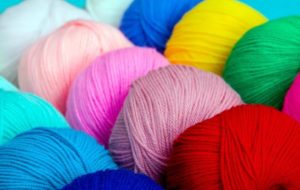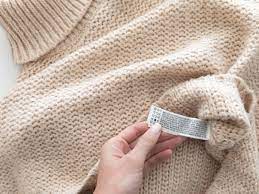What is acrylic?
Jump To:
With a soft and silky touch, an aspect so warm that it is often confused with wool, acrylic has become a staple in clothing. Its detractors often criticize synthetic textile; acrylic is far from unanimous. What kind of fabric is behind this name that does not only have followers? What are its advantages and disadvantages? An overview of this winter fabric in this article.
History of acrylic
Acrylic was invented in 1942 during World War II by a German chemist, Herbert Rein, and was then industrialized in 1948 by an American company (the same company that industrialized elastane).
Acrylic manufacturing
This is a fiber obtained from petrochemicals. The polymerization of the acrylonitrile molecule obtains it.
To put it simply, acrylic is a material derived from plastic and made from petroleum like all synthetic textile materials.
Spinning is carried out on dry or wet material. In both cases, the spinning requires the use of a toxic solvent.

Properties Of Acrylic
1. Soft and silky
Acrylic is light, soft, and silky. This is why it is often mixed with somewhat rougher natural fibers (such as certain wools) to improve the softness of the clothes.
The usual combinations
Like most synthetic textiles, acrylic blends with other natural and synthetic materials, although it can be used without blending. Some of the most common combinations include:
- Wool-acrylic
- Cotton-acrylic
- Polyester-acrylic
- Polyester-cotton-acrylic
2. Do not crumple
It is a fiber that does not crease and is therefore increasingly used to make wrinkle-resistant clothing (shirts, t-shirts, etc.) or for quick ironing.
3. Acid-resistant
Resistant to acids, it is widely used in the manufacture of work clothes.
4. Insulation
Acrylic is an insulating material that retains air well, a property it shares with wool. This property is accentuated with the right form of the meshes.
5. Warm
Acrylic has a high diathermic power; it means that it transmits heat. This is why it is often found in blankets.
Acrylic, a material similar to wool

Acrylic has a rendering very similar to wool without having its properties. It is a fiber widely used in the manufacture of sweaters (mixed with wool) because it brings softness to sweaters and is very cheap (acrylic is much cheaper than wool, which is why it is found often in entry-level products).
Even though acrylic looks like wool in appearance, it does not have the same benefits. In winter, it plays a perfect role in insulation but is very little breathable. Like all synthetic materials, acrylic risks making you sweat, unlike wool, which has thermoregulating properties.
Acrylic is a fiber widely used by Fast Fashion brands because it is cheap.
It is preferable to favor 100% natural materials that are more comfortable, such as wool, linen, or cotton, for your sweaters.
Acrylic, a dangerous fabric derived from plastic
Disastrous environmental impact
Acrylic is a textile material made from petroleum and requires a significant amount of energy to produce. Like other synthetic fibers, the environmental impact of acrylic is therefore very negative.
In addition to the pollution generated during its manufacture (petroleum, energy, chemical solvents, etc.), acrylic clothing, such as polyester, polyamide, elastane, or recycled polyester, release plastic microparticles with each wash. These plastic microparticles are too fine to be treated by wastewater treatment plants and therefore end up in the oceans, which have a very harmful impact on marine ecosystems.
Risks of allergies and dangers
Many cases of allergies have been detected following the wearing of acrylic clothing. Indeed, particular chemicals used to treat the material and not mentioned on the composition labels can be harmful and cause skin problems (pimples, eczemas, burns, etc.).
It is also important to know that acrylic releases two dangerous gases during its combustion: Carbon Dioxide and Hydrogen Cyanide.
Both are dangerous, but Hydrogen Cyanide is particularly toxic to humans. We, therefore, let you imagine the health and ecological problems that can result from the incineration of old acrylic clothes.
Care of acrylic clothing

Acrylic is a fiber that pills quite easily, so some care is necessary when washing your clothes.
The ideal is to turn your clothes around, overfill your machine, and choose a short cycle with a reduced spin.
You can go up to 40 degrees maximum; however, for ecological reasons, we strongly advise you not to exceed 30 degrees (your clothes will also be washed at 30 or 40 degrees, and you will save money. energy).
In addition to these recommendations, it is also important to use a Guppy Friend bag when washing your acrylic clothes (like all your synthetic clothes). This bag, where you will place your synthetic clothes, will help retain a large part of the plastic microparticles (more than 80%) so that they do not end up in the oceans.
Once your machine is finished, all you have to do is throw the microparticles in the bag in your trash.
Alternatives to acrylic
Although comfortable, the impact on the environment and the health of acrylic is disastrous; it is, therefore, preferable to completely ban this fiber from your wardrobe (be careful, this does not mean that you have to throw all your clothes in. acrylic in the trash because the impact on the environment would be worse if you had to buy new products).
To replace acrylic, choose natural materials such as organic cotton, linen, wool, hemp, or chemical materials that are not harmful to the environment, such as modal or Tencel.
Identify natural woolens
The main reason for the presence of synthetic fibers in woolens is that they provide softness. Indeed, sheep’s wool is very famous for being hot, but unfortunately, it can cause tingling or itching. Mixed with a synthetic fiber, sheep’s wool becomes softer and softer. This is the first thing to remember… if the wool is very soft, it is because it is very silky wool is expensive like a pashmina or angora wool… or else the wool is synthetic. The second trick is to burn a fiber to know the material. When burning, the wool fiber will give off a burning hair odor while the synthetic fiber will melt.
